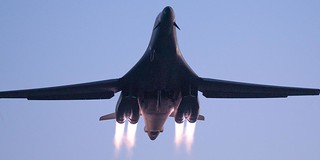The images of the Russian submarine that was seriously damaged in a Ukrainian attack
In the early hours of February 13, 2023, the Ukrainian Armed Forces carried out a successful attack against the Russian navy.
The Ukrainian attack on the Russian naval base in Sevastopol
This attack targeted the Sevmorzavod shipyards, located in the Sevastopol naval base, in Crimea, a Ukrainian territory illegally occupied by Russia since 2014. Ships from the Russian Black Sea Fleet are repaired in these shipyards. At 2:38 a.m., Mikhail Razvozhaev, Russian governor of occupied Crimea, noted on his Telegram channel: "About 20 minutes ago our enemies attacked Sevastopol. The air defense has worked. Now there is a fire in the South Bay area Not in a civilian place; according to preliminary information, the fire was caused by a missile attack."

Two hours later and after stating that the air defense had worked Razvozhaev published this photo of the attacked shipyard, with a major fire, and noted: "I am at the scene of a fire at the southern site of Sevmorzavod. All operational services are working at the scene, there is no danger for civilian assets in the city. As a result of the attack, according to preliminary information, a total of 24 people were injured, 4 of them in moderate condition."
The United Kingdom said the submarine “has almost certainly been functionally destroyed”
Two days after the attack, the British Ministry of Defense published an intelligence report noting that in the Ukrainian attack on Sevastopol "multiple missiles struck the Sevmorzavod shipyard within Russia’s Black Sea Fleet (BSF) Sevastopol naval base. The landing ship Minsk and Kilo 636.3 class submarine Rostov-na-Donu were hit while undergoing maintenance in dry docks. Despite the Russian Ministry of Defence downplaying the damage to the vessels, open-source evidence indicates the Minsk has almost certainly been functionally destroyed, while the Rostov has likely suffered catastrophic damage."
A Russian OSINT group releases images of the seriously damaged submarine
Finally, this afternoon a Russian OSINT (open source intelligence) group, Conflict Intelligence Team (CIT) has published two images of the attacked submarine, pointing out the following: "CIT received exclusive photos of the damaged Russian submarine Rostov-on-Don. They indicate she received two hits, one of which is not visible from the satellite imagery." According to the CIT, "even though the extent of fire damage inside is not visible, it seems more reasonable to build a new submarine rather than repair this one."

The first of the photos released by the CIT, in which everything around the ship appears pixelated, shows two large holes on the starboard side, one in the middle of the hull and another in the bow section, in front of the candle. Here you can see an enlargement of the damaged area:

Here we can see the second photo, which shows the hole made by the Ukrainian missile, which hit the Russian submarine just in front of its sail:

Here we can see an enlargement of the damaged area:

A Norwegian analyst points out the serious damage suffered by the submarine
This afternoon, the CIT has published this analysis of the damaged areas, published by Norwegian tweeter Thord Are Iversen:
Thord Are Iversen's analysis notes: "he pressure hull has been penetrated by both hits. Forward hit on the torpedo room, which also has batteries near the keel. Second hit might have hit the crew compartment or the auxiliary spaces further aft, or possibly both compartments. There's also batteries near the keel of the crew compartment." Likewise, he adds: "If hatches between compartments were open, there could be damage to non-hit compartments too."
This Norwegian analyst concludes: "I think she's a total loss due to the extent of this damage, especially with two holes to the pressure hull, but other internal damage factors in too. Repairs may be theoretically possible but it would be difficult, take a long time, a lot of resources and would likely needed to be done at Admiralty, St Petersburg. The 636.3 production line is going so I think it will be much easier to build a new sub as replacement than trying to fix this damage."
The "Rostov na Donu" was a relatively recent ship: it was launched in June 2014 and entered service six months later. It was 76.2 meters long and was armed with 6 553 mm torpedo tubes, with a total of 18 torpedoes on board, in addition to 24 mines and 8 missile launchers, which could be equipped with Kalibr surface-to-surface ballistic missiles, which have been used by Russia to attack Ukrainian territory, including civilian residential areas. The "Rostov na Donu" was one of four her-class submarines that the Russian Black Sea Fleet had at the beginning of the invasion.
There are already 16 naval units lost by Russia in this invasion
With this Ukrainian attack, and according to data from Oryxspioenkop.com, there are already 16 naval units lost by the Russian navy in this invasion, with losses as considerable as the sinking of the cruiser "Moskva", which It was the flagship of the Russian Black Sea Fleet.
Sevastopol naval base is not longer safe for Russia
The problem for Russia is that this Ukrainian attack represents a qualitative leap, since Ukraine already has the Sevastopol base within reach, which is the main base of the Russian Black Sea fleet. This base is no longer safe for Russian ships, so Putin will surely be forced to move his naval units to the Novorossiysk naval base, in Russian territory, located 337 km to the east from Sevastopol. In fact, some Russian units from Sevastopol had already been transferred there following previous Ukrainian attacks on the Russian fleet. For Russia, this attack is a new humiliation, inflicted by the Ukrainian Armed Forces that are much inferior in resources but that have been increasing their capabilities missile artillery with a range of up to 1,000 km.
---
Main photo: Ministry of Defense of the Russian Federation. The submarine "Rostov na Donu" (B-237) in a photo from 2014.
|
Don't miss the news and content that interest you. Receive the free daily newsletter in your email: |
- Most read
- The brutal 'touch and go' of a Lufthansa Boeing 747 at Los Angeles Airport
- A Spanish pilot shows one of the C-295M of the 353 Special Operations Squadron
- An American airman used a Flag of Spain to direct a B-1B Lancer bomber
- Eurofighter vs F-35: the opinions of professional pilots on these advanced fighters
- The massive takeoff of more than half of the United States B-2 Spirit stealth bombers
- The firearms used by the Pontifical Swiss Guard, the smallest army in the world
- The deployment of Spanish soldiers of the Regulars and BRILAT near Russian territory

 ES
ES








Opina sobre esta entrada: